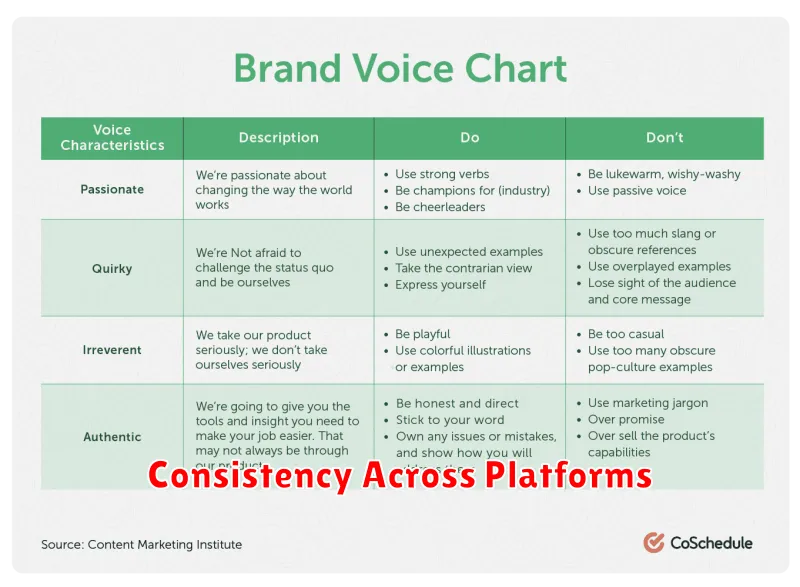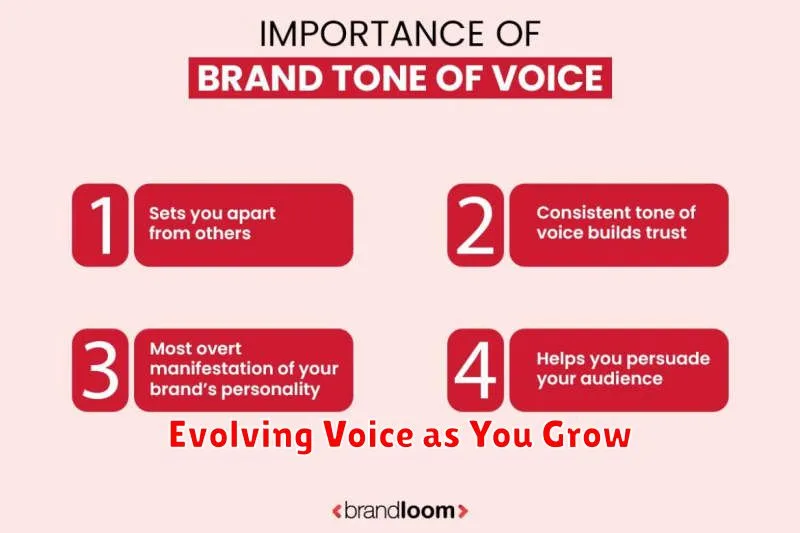In today’s saturated market, a strong brand voice is crucial for cutting through the noise and resonating with your target audience. Brand Voice 101 provides a foundational understanding of how to craft a unique and authentic voice that embodies your brand’s values and personality. This involves identifying your brand’s tone, the specific style and manner in which you communicate, and maintaining consistency across all platforms. This article will equip you with the essential knowledge and practical steps to define, develop, and maintain a compelling brand voice that sets you apart from the competition.
Discovering your ideal brand voice and tone is a journey of self-discovery for your business. It requires a deep understanding of your target audience, your core values, and your unique selling propositions. Through careful consideration and strategic planning, you can cultivate a brand voice that not only attracts customers but also fosters lasting relationships. This guide offers actionable insights into finding the perfect tone of voice for your brand and ensuring its consistent application across all communication channels, from social media posts to marketing materials and customer service interactions. Mastering your brand voice is an investment in building a recognizable and trustworthy brand identity.
What Is Brand Voice?
Brand voice is the personality expressed through words and tone used in all communications. It’s how you communicate your brand’s values and message to your audience.
A well-defined brand voice helps create a consistent and recognizable experience for customers across all platforms. This consistency builds trust and strengthens brand identity.
Think of it as the verbal expression of your brand’s personality. It encompasses everything from the language used on your website to the captions on your social media posts.
Defining Your Brand Personality
Before crafting your brand voice, you must first define your brand personality. This is the human-like set of characteristics that embody your brand. Think of it as if your brand were a person – what would their traits be? Would they be friendly and approachable, or sophisticated and professional? Understanding this foundation is crucial for developing a consistent and authentic voice.
Consider some key questions: If your brand were a person, what would their age be? What kind of clothes would they wear? What would their hobbies be? These seemingly simple questions can provide valuable insights into the core of your brand identity and inform the tone of your communications.
Key personality traits to consider include:
- Excitement: Carefree, spirited, and youthful.
- Sincerity: Honest, wholesome, and down-to-earth.
- Ruggedness: Tough, outdoorsy, and adventurous.
- Competence: Reliable, responsible, and efficient.
- Sophistication: Upper class, charming, and glamorous.
Formal vs Conversational Tone
Understanding the difference between formal and conversational tone is crucial for establishing a consistent brand voice. A formal tone maintains a professional distance, using precise language and avoiding slang or colloquialisms. This tone is often suitable for industries like finance or law.
Conversational tone, on the other hand, aims to create a sense of familiarity and approachability. It uses more relaxed language, incorporating humor and personal pronouns to connect with the audience. This tone is frequently employed by brands targeting a younger demographic or in industries like entertainment or food.
Choosing between these tones depends on your target audience and brand personality. Consider which tone best represents your values and resonates with your desired customer base.
Finding the Right Language for Your Audience
A crucial aspect of developing a strong brand voice involves understanding your target audience. Who are they? What are their interests? What language do they use?
Consider factors such as age, demographics, education level, and professional background. A younger audience might respond well to informal language, while a professional audience might prefer a more formal tone.
Analyze your competitors. What language do they use to connect with a similar audience? This analysis can provide valuable insights, allowing you to identify opportunities to differentiate your brand voice.
Consistency Across Platforms

Maintaining a consistent brand voice across all platforms is crucial for building a recognizable and trustworthy brand. Whether it’s your website, social media profiles, email newsletters, or printed materials, your tone should remain uniform. This consistency fosters a strong brand identity and reinforces your message, regardless of where your audience interacts with you.
Think of your brand voice as your personality. It should be recognizable even if the logo is removed. This consistent “personality” builds trust and familiarity with your audience.
Tone for Email, Social, and Website
Maintaining a consistent brand tone across different platforms is crucial for brand recognition and building trust. While your core brand voice remains constant, the specific tone may shift slightly depending on the platform and audience.
Email typically requires a more formal tone, focusing on clear and concise communication. Prioritize professionalism and providing valuable information to your subscribers.
Social media allows for a more relaxed and engaging tone. It’s an opportunity to showcase your brand’s personality and connect with your audience on a more personal level. Brevity and a conversational style are often preferred.
Your website serves as your central hub and should reflect your overall brand voice and mission. The tone should be informative, authoritative, and aligned with your brand identity.
Creating a Brand Voice Style Guide
A brand voice style guide is an essential tool for maintaining consistency in your communication. It acts as a single source of truth for how your brand speaks, writes, and interacts with its audience.
This guide should document the core elements of your brand voice, including:
- Tone of Voice: Describe the overall feeling (e.g., formal, friendly, playful).
- Language: Specify preferred vocabulary, grammar usage, and sentence structure.
- Personality: Outline the brand’s character traits (e.g., professional, quirky, innovative).
- Examples: Provide real-world examples of do’s and don’ts for various communication channels.
By establishing clear guidelines, your style guide will help ensure everyone representing your brand communicates effectively and consistently, strengthening your brand identity.
Training Your Team for Consistency
Once you’ve established your brand voice, training your team is crucial for maintaining consistency. Every team member who communicates with the public, creates content, or interacts with customers should understand the brand voice guidelines.
Provide clear documentation. A style guide outlining the brand voice’s characteristics, including tone, language, and vocabulary, is essential. Supplement this with examples of both correct and incorrect usage.
Conduct workshops or training sessions. Interactive sessions can solidify understanding and allow for questions and practice. Consider role-playing scenarios to test application of the brand voice in real-world situations.
Monitoring Tone in Content and Replies
Maintaining a consistent brand voice requires ongoing monitoring. This includes reviewing both the content you create and how you respond to audience interactions. Regular audits of published content help ensure adherence to established brand voice guidelines. Check for deviations in tone across different platforms and content formats.
For replies and interactions, real-time monitoring is crucial, particularly on social media. Establish a system for reviewing responses before they’re published, especially for sensitive topics. This prevents unintended miscommunications and maintains a unified brand presence online.
Evolving Voice as You Grow

Just as individuals mature, so too does a brand’s voice. Staying stagnant can make your brand feel out of touch. Adaptability is key. Regularly audit your brand voice to ensure it resonates with your current target audience and reflects your evolved values and offerings.
Consider slight shifts in tone and vocabulary as your business grows. A startup might initially employ a casual, energetic voice. However, as the company expands and serves a more diverse clientele, a more sophisticated and professional tone might be necessary.
Consistency remains paramount. Even while evolving, ensure your core brand identity stays recognizable. Document any changes to your brand voice guidelines to maintain clarity and cohesiveness across all platforms and communications.

